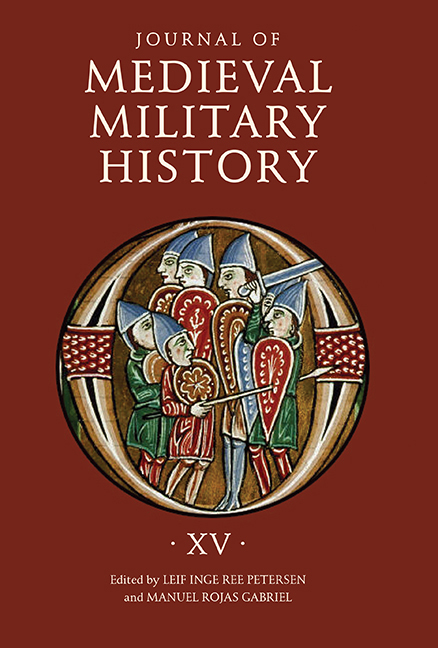Book contents
- Frontmatter
- Dedication
- Contents
- List of Illustrations
- Preface
- 1 Later Roman Grand Strategy: The Fortification of the urbes of Gaul
- 2 In Search of Equilibrium: Byzantium and the Northern Barbarians, 400–800
- 3 Evolving English Strategies during the Viking Wars
- 4 Norman Conquests: A Strategy for World Domination?
- 5 The Papacy and the Political Consolidation of the Catalan Counties, c. 1060–1100: A Case Study in Political Strategy
- 6 Alfonso VII of León-Castile in Face of the Reformulation of Power in al-Andalus, 1145–1157: An Essay in Strategic Logic
- 7 The Treaties between the Kings of León and the Almohads within the Leonese Expansion Strategy, 1157–1230
- 8 A Strategy of Total War? Henry of Livonia and the Conquest of Estonia, 1208–1227
- 9 The English Longbow, War, and Administration
- List of Contributors
- Journal of Medieval Military History
- De Re Militari and the Journal of Medieval Military History
5 - The Papacy and the Political Consolidation of the Catalan Counties, c. 1060–1100: A Case Study in Political Strategy
Published online by Cambridge University Press: 21 August 2019
- Frontmatter
- Dedication
- Contents
- List of Illustrations
- Preface
- 1 Later Roman Grand Strategy: The Fortification of the urbes of Gaul
- 2 In Search of Equilibrium: Byzantium and the Northern Barbarians, 400–800
- 3 Evolving English Strategies during the Viking Wars
- 4 Norman Conquests: A Strategy for World Domination?
- 5 The Papacy and the Political Consolidation of the Catalan Counties, c. 1060–1100: A Case Study in Political Strategy
- 6 Alfonso VII of León-Castile in Face of the Reformulation of Power in al-Andalus, 1145–1157: An Essay in Strategic Logic
- 7 The Treaties between the Kings of León and the Almohads within the Leonese Expansion Strategy, 1157–1230
- 8 A Strategy of Total War? Henry of Livonia and the Conquest of Estonia, 1208–1227
- 9 The English Longbow, War, and Administration
- List of Contributors
- Journal of Medieval Military History
- De Re Militari and the Journal of Medieval Military History
Summary
The relationship between the Catalan counties and the papacy was intense from the time when Sunyer, monk of the abbey of Cuixà in the Pyrenean region of Conflent, traveled to Rome in 950 to seek papal protection for his monastery. At the beginning of the preceding century, the Carolingian empire had organized into several dependent administrative units the Roman-Visigothic population of the northeastern part of Iberia which had remained free from Muslim power or, in many cases, had regained freedom from it as a result of Frankish campaigns which brought Christian control over the cities of Girona in 785, and Barcelona in 801. The restructuring of the region affected also some less thoroughly romanized groups which had originally dwelt deep in the Pyrenees and whose members were called hispani by contemporary Carolingian sources. Once the western empire entered an irreversible decline as an effective continental power in the second half of the ninth century, these borderline districts facing al-Andalus became political units autonomous to all intents and purposes from increasingly powerless emperors – a development which was shared by many of their counterparts in other parts of the Carolingian world. The Catalan counties followed the course from dependent administrative centers into fullyfledged self-ruling political structures, as did other territories in the empire.5 This complex and multifaceted process underlay their history from the late ninth to the mid-eleventh centuries. It basically meant the gradual strengthening of so far incipient feudal relations at the bottom and at the top of society, at the rural base and among high political circles.
Modern historiography on these eastern Iberian counties at that time has concentrated mainly on the transformation, or to be more precise on the “mutation,” of allegedly “free” peasants into serfs which had taken place in the latter stages of the period; this thesis implies the absence of any previous feudal features in social relations and a tacit agreement on the ascription of Carolingian and early post-Carolingian southern Pyrenean counties to “Late Antiquity.” The line of thought shared by this type of study has clearly followed the path opened by the seminal but rather schematic, and somewhat misleading, book by Pierre Bonnassie.
- Type
- Chapter
- Information
- Journal of Medieval Military HistoryStrategies, pp. 103 - 117Publisher: Boydell & BrewerPrint publication year: 2017

